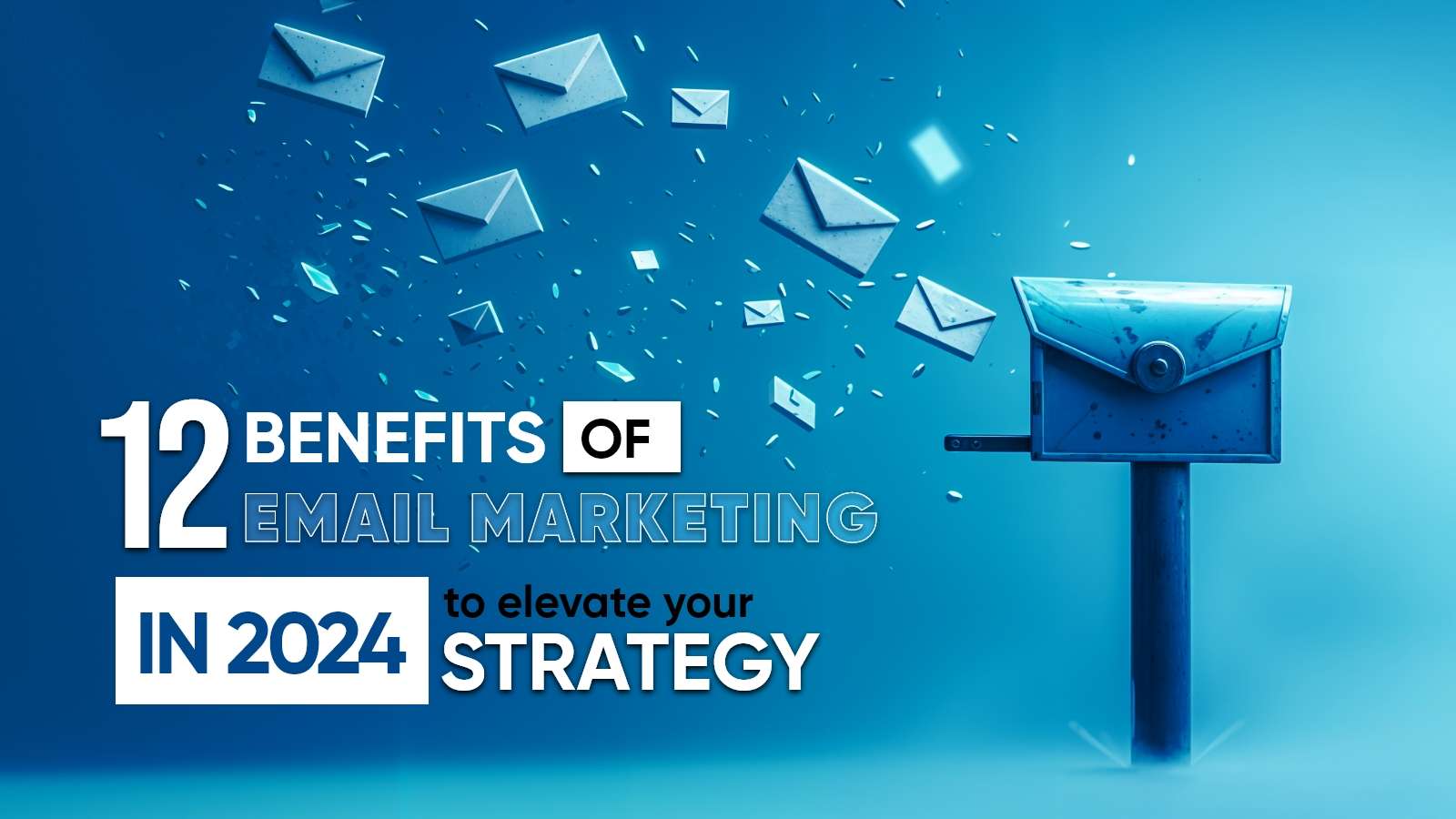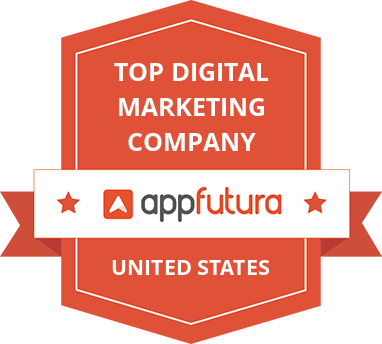Content
How to Rank: The SEO Checklist
Since SEO (Search Engine Optimization) is such a large field, it’s easy to become sidetracked or distracted by details.
For your benefit, we have put up the most comprehensive SEO checklist to help you grow your website’s organic traffic and improve your ranking.
Everything on this list is working perfectly. Therefore, you will appreciate this SEO checklist if you wish to rank higher on Google in 2023.
Without further ado, let’s get started.
How to Use This Checklist?
You can use this SEO checklist to boost traffic while also helping with keyword research.
This is organized into parts for your convenience, so you can quickly scroll down to find what you’re searching for.
You already know that SEO is a continuous process; therefore, bookmark this page so you don’t get lost in the world of SEO.
This checklist includes all of the best practices employed by professionals. You do not have to implement everything on this list. Just do the best you can.
Remember, the more tips you put into practice, the more traffic you will get.
SEO Basics Checklist
First and foremost, let’s go through the Basic SEO Checklist. These will not immediately improve your rankings, but they will help you rank higher on Google.
Basic SEO is the core of every effective SEO campaign.
Create Google Search Console and Bing Webmaster Tools accounts
Google Search Console (GSC) is meant to help you track the website’s performance in Google searches.
It is a really effective, free tool. This allows you to check how Google views your website and whether there is any crawl ability or indexing issues.
In contrast, Bing Webmaster Tools is a platform similar to Google Search Console. However, for the Bing search engine.
You can upload the sitemap and also check which keywords are sending more traffic to your website. So, if you don’t have these settings, we would strongly propose that you create accounts to keep an eye on your SEO campaign.
Set up Google Analytics
Google Analytics is a completely free analytics tool. It’s the most effective technique to learn how visitors reach your website. You may term it a reporting tool that offers you all the reports from where the user got to your website to how the user engaged with the website.
Google Analytics features include the following:
- Identify the pages that are attracting the most visitors.
- Which devices are your users more likely to use to access your website?
- You can also view the demographics of your users.
- Google Analytics includes your average bounce rate, page visits, and a variety of additional metrics.
Google Analytics data assists you in making SEO strategies.
You may link Google Analytics and Google Search Console to see the combined data from both tools on a single screen.
Use SEO plugins like Yoast
If you use a Content Resource Management (CRM) system, such as WordPress, you will require an SEO plugin.
Other plugins, such as Rank Math and SEO Framework, are available, but Yoast is the best one to utilize. Yoast makes optimizing your WordPress website for search engines a snap.
Yoast makes it simple to add keywords to blogs and develop meta descriptions that assist search engines in understanding what the article is about.
Create and submit an XML sitemap
A sitemap is similar to your website’s content table. It notifies the search engine where the relevant information on your website may be found. It helps search engines crawl and indexes SEO your website.
If you use a CRM, such as WordPress, the sitemap will be generated automatically.
If not, you may quickly generate an XML sitemap with a free sitemap-generating tool.
After you’ve created the sitemap, submit it to Google Search Console and Bing Webmaster Tools.
The URLs for viewing the sitemap of your website or any other website are as follows:
- /sitemap.xml
- /sitemap_index.xml
- /sitemap
Create a robots.txt file
Robot.txt is a plain text file that tells the search engine which pages it should crawl and index. In this file, you can tell the crawler which pages you don’t want it to index.
If you operate an e-commerce site, for example, you don’t want crawlers to browse or index your cart or payment pages.
To view your website’s robot file, use your homepage URL followed by /robots.txt.
If you don’t have one, you can make one using the robots.txt generator. It’s usually a good idea to keep this file on your website.
Technical SEO Checklist
Technical SEO is very essential for ranking highly on the SERPs. Before going towards keyword research or quality content, you have to make sure that your website can be easily crawled and indexed by the search engine.
Here is the basic technical SEO checklist everyone should follow:
Discover How Google Sees Your Page
It is critical that both users and search engines can easily navigate your website. Sometimes users can see everything, but on the back end, there are some issues or complexities in the website structure that prevent search engines from accessing everything.
If search engines can’t fully access your website, then you are not getting ranked.
Use Google Search Console’s “Inspect URL” feature to see your page from Google’s point of view.
Also, use a proper structure or mind map for your website so that every page is properly connected internally to the next related page.
Your website should have a proper tree structure, and the pages should not be intermingled.
Make sure you’re using HTTPS
Google has confirmed HTTPS as a ranking factor
If your website is not using it, you should quickly migrate your site to HTTPS. It secures the data between the website and the server. If your website asks for personal or payment information, then it’s an absolute must
How would you know if your website has HTTP or HTTPS?
If you see a padlock before your URL, then you are using HTTPS. If not, then you are not using it. HTTPS builds trust in the eyes of your users that their data is secure when they are on your website.
Ensure that your website is mobile-friendly
Mobile friendliness is very important for ranking higher on the SERPs
Most searches happen on mobile phones. In 2019, Google launched a “Mobile First Index” for all websites. So, if your website is not mobile-friendly, forget the ranking.
You can see whether your website is mobile-friendly or not by using Google’s Mobile-Friendly Test.
Always use a website theme that is responsive to different devices. Also, check the mobile view of the website to make sure that it is easily navigable on a mobile device.
Remember that if the user has a bad experience on your website, he is not coming back no matter how much quality content you have.
Before starting any SEO strategy, make sure that your website is mobile-friendly.
Check that your site loads quickly
Another thing that has a huge impact on the user experience is the loading speed of your website.
Nobody waits for a slow website to open. If your site does not open quickly, it is not going to rank.
Users do not stay long on a slow website, which increases the bounce rate, and this rate has a negative impact on your ranking.
If you want to check the speed of your website, you can use the free Google PageSpeed Insights tool.
If you want to rank higher in SERPs, then make the user experience your first priority in every sense, whether that be the color theme or the loading speed.
Make sure your website is only accessible via one domain
Make sure that Google has indexed only one version of your website. All the visitors that come to your website should land at one location.
For instance, the following are all versions of your website:
- https://www.domain.com
- https://domain.com
- http://www.domain.com
- http://domain.com
Always choose just one version; preferably, it should be HTTPS.
To check, type all variations of your website in the search bar to see if they all land on the same page. If they don’t, you have to set a permanent 301 redirect.
To have one version of your website indexed is very important; if you have more, it can cause crawling, indexing, and security issues for you. Also, it can get your website penalized by Google due to duplicate content.
Resolve broken links (404 errors)
Broken links really hurt your SEO strategy. A broken link is a link that points to a page that does not exist anymore. It was deleted or moved.
If you click on such a link, the server returns a 404 (Page Not Found) error.
Broken links damage the user experience because no one wants to click a link that takes them nowhere.
How can you fix the broken links on your website?
You can’t just click on the links on your website; if you have a bigger website, these links could number in the thousands or even more.
You can use tools like Screaming Frog and Google Search Console to find broken links.
When you have found the broken links, here are some options for you to fix them:
- Create the 301 redirects so the link points to the page it was intended to.
- Update or fix the URL.
- Remove the link from your website.
Make it a routine to check for broken links on your website.
Know when to use 301 redirects instead of 302 redirects
Both of these are redirects that are used to direct search engines and users to the new URL instead of the one they were intended to visit.
A 301 redirect means the page has been permanently moved to a new location, whereas a 302 redirect shows that the move is temporary.
Although Google has confirmed that 302 redirects pass PageRank, they should be moved to 301 when you know that the move is permanent.
You can see the redirects on your website by using the “site audit” feature in SEO tools.
Content Checklist:
You have probably heard that content is king. Yes, that is absolutely correct. Without great content, any SEO strategy would fail.
You have done great technical SEO and properly researched keywords, but if your content is not up to par, then all your efforts will be in vain.
Follow this checklist to level up your content for better SEO:
Create user-focused content
Understanding the search intent of the user is the first step. Then creating engaging, easy, and actionable content is the next important thing.
Content is the king of SEO. Why?
Because you want to engage your users so they don’t leave your site without performing what you want them to do. CTAs or selling anything to them are examples of this.
If your visitor is not doing what you want them to do, then your content is dull and is not answering the user’s query.
Always create useful content for users so that at the end of their reading, they feel they have learned something and have not squandered their time.
To write great content, you can use the “Skyscraper Technique.” In this technique, you search for the best content in your relevant industry and try to write better than that.
Try to directly hit the user’s pain point with your content and don’t beat around the bush.
Create an effective introduction.
If you can’t hook your visitors in the first few seconds, they are not going to stay on your website. If you have convinced users in the intro that your page offers what they are looking for, then you have won.
Your introduction should establish trust with the user, connect with him, and persuade him that you will provide the solution he seeks.
For good SEO, use your primary keyword in the introduction.
Remember, if the user does not read the full introduction, he is not going to read your full content, which means zero conversion, sharing, or linking.
Use of primary and LSI keywords
The keywords you researched are very important for the content to rank. As mentioned above, use the keyword in the introduction, which is in the first 150 words.
Also, use the keyword in the headings
There are some latent semantic indexing (LSI) keywords. These are basically similar words to your primary and secondary keywords. So, make use of LSI keywords in the content throughout the page.
From Google suggestions to LSIGraph, there are many free tools to generate LSI keywords.
Keep the main keyword usage density in mind; don’t exceed that.
Properly use heading tags
HTML heading tags help to create a hierarchy and break your content into sections. As a result, users can easily skim through it. They also help search engines easily crawl your pages.
These tags are from H1 to H6, with H1 being the biggest and most important heading. The H1 tag is used to mark up a webpage’s main subject.
Use H1 only once; don’t duplicate it.
Other tags can be used for sub-subheadings. Use these heading tags correctly to improve user experience
Use concise sentences and provide a table of contents
Most people don’t like long sentences and paragraphs; they like to skim through the text. They prefer simple vocabulary and short sentences
So, instead of complicating things, keep them simple.
If you want to check the readability level of your content, you can use the Hemingway tool, which is free to use. It not only tells you the current grade level of your content but also gives you suggestions to make it better.
Remember to avoid jargon because not everyone understands it and to write in an active voice.
It helps users easily skim through your content, and another thing that is useful is the table of contents. The table of contents basically provides jump links to different topics on the page.
Use it in lengthy content; it makes it easy for the user to navigate through the whole page. Also, it makes your website user-friendly, thereby improving the user experience and, in return, your website’s ranking in the SERPs.
Content is more than just a bunch of words
Nobody wants to read a lengthy piece of text to which there seems no end. Just plain text can lead people to bounce.
Use images in between the text to improve the user experience. You can also use any interesting video to pique the users’ interest.
Don’t use just random images; try to find or create images that will attract the attention of the user.
Also, throwing text and images on a page is not a good practice. You need to work on formatting and styling to give users an awesome experience.
Review and update current content
Reviewing previous content is really important. A content audit can help you find ways to improve your content.
Content Audit Tool is provided by various SEO software such as SEMrush and Ahrefs, among others.
You know that content naturally ages and becomes outdated
Fresh and updated content helps you improve your ranking. Google shows the date on which you last updated the content. No user wants to read obsolete content; everyone prefers the latest content.
So, updating your previous content builds trust with not only your customers but also with the search engines.
On-page SEO checklist
On-page SEO is the process of optimizing your website’s content, from the title to the images. These changes are mostly targeted at improving the user experience. Also, to increase search engine visibility.
Make sure to follow the below checklist for on-page SEO. Remember to create content for users by following search engine guidelines.
Let’s get into the checklist for on-page SEO:
Make sure your URL is brief yet meaningful
Keep your URL as short as possible. But at the same time, try to give information to the user and search engines about what your page is about. Here, meaningful refers to the idea that your URL should be as brief as possible while still conveying all of the information about your website.
You can do this by using your primary keyword in the URL. A URL is similar to the internet’s home address, so use different URLs for different pages. Or else Google will not be able to understand which one to rank.
Short yet descriptive titles help searchers understand what the page is about.
Create a catchy title tag
Just like the URL title tag, this makes it easy for search engines and users to understand what the page is about.
The title tag is the most important for SEO, and you should never miss it.
The best practice for title tags is to use your primary keyword in them if it comes naturally; don’t force keywords into the title. Also, try to keep the title as short as possible.
Make a title that will make people want to click it.
Add a meta description
The meta description is the short text that appears below your title tag in the SERPs. It may not affect SEO, but it impacts click-through rate (CTR). It helps searchers understand what your page is about, and from there they decide whether they want to visit your page or not.
The meta description is your chance to persuade people to visit your website.
Meta descriptions can be of any length, but it’s best to keep them long enough that they are descriptive enough for people to understand. So, you should keep it between 50 and 160 characters.
Include your primary keyword in the meta description, and also use active voice.
Read Also: Importance of Corporate IR for Public Companies
Image Optimization
Images are an important part of your content; they not only make it more visual but also help you rank in Google Images.
Remember, the larger your image files are, the longer they take to load, and the more it impacts your website’s loading speed. You can use an image compressor to reduce the size of images.
Apart from the size of the image, there are two more things to keep in mind while using images.
The first is the image file name on your device. Don’t save images on your laptop with generic names like IMG_45623.png. Use descriptive names like gray-hat.png.
Secondly, alt text is a piece of text included in the page’s HTML code that is intended to describe the image. You know Google can’t see your image as humans can. So, this alt text helps search engines understand what the image is about and also helps people who use screen readers.
Internal and external linking is essential
Some people ignore internal links, considering them not important for SEO, but that’s not correct. Internal links help search engines and users easily navigate your website.
When you publish new content or create a new page, try to link it to some other pages on your website.
Internal links help users quickly find relevant data on your website, thus improving the user experience and increasing engagement time.
Also, try to link your content to some trustworthy websites. These are external links; this gives a message to Google that your content is well-referenced and can be trusted by searchers. So, Google shows it in SERPs.
Try to use keyword-rich anchor text.
Just add links when it makes sense. Don’t force internal or external links.
Make use of Schema Markup
Schema markup is not compulsory for SEO, but it adds more context to your content. It is a piece of code that you insert into your website to tell Google which category your website belongs to.
On SERPs, you will see the difference between a site with schema markup and one without. The site that has schema markup added will have star ratings, reviews, etc. under the title.
Schema markup helps you structure data. By using Schema Markup, website owners can ensure their content stands out from competitors and attracts more clicks from those searching for relevant topics online.
Off-Page SEO Checklist
You have the best website and content, but searchers know nothing about you. You must have authority in your domain so that people will trust you and visit your website
You can’t overlook off-page SEO. If you want to rank higher, you must focus on off-page SEO.
Link building is crucial in off-page SEO, but it is not the only thing in off-page SEO.
Build a powerful backlink profile
A strong backlink profile means an authoritative and valuable domain. To achieve this, there are many link-building strategies you can choose from.
Guest posting is one of the best ways to get backlinks from websites with high domain authority. The only thing you need to get quality links is quality content.
If you are just working on creating links from yellow pages or business directories, they are not going to increase your website’s ranking more than backlinks from guest posts.
Build a strong backlink profile to rank higher on SERPs.
Crawl your competitors’ backlink strategies for your careful optimization
The “Competitors Backlink Analysis” feature of tools like Ahrefs and SEMrush, among others, provides you with information about your competition’s backlinks. This analysis clearly shows the gap between backlinks and where they are going ahead of you.
You can contact websites where your rivals have backlinks and build connections by delivering superior content.
Step up your social media game
Working on off-page SEO is about more than simply acquiring backlinks; it’s also about getting traffic from a number of various sources (non-paid, of course). We must not underestimate the power of social media to engage and retain audiences. To get the most results from your off-page SEO, you need a well-managed social media marketing approach.
Broken Backlinks Rebuilt
These are broken links between websites. It usually causes a fuss and harms the website’s reputation. If not maintained properly and on time, it might have a negative impact on your website’s SERP rankings. Most of the time, simply monitoring and changing backlinks is enough to keep it going, and it should be seen as an important aspect of SEO.
Simply utilize web tools, such as Google and Ahrefs, to discover broken links.
Optimization of local SEO
Local SEO is the process of optimizing your website for local searches. It makes it easier for users to find your business both online and offline. As a result, monitoring your website’s local SEO on a frequent basis is essential. Almost all of the tactics utilized as SEO strategies may be applied because they are highly successful for local SEO.
Other optimizations you can adopt for better local search rankings are
- can sponsor local events.
- Use keywords that are locally focused.
- Add a Google Map to the Information Page.
- Friendly relationships with local vendors and distributors, both online and offline.
Conclusion
Since SEO is always evolving, it is challenging to include all elements of SEO in a single checklist. However, if you address the points listed above, you will be on your way to improved SERP rankings.
Using the SEO checklist suggested in this post will help you enhance website visibility, establish a better online presence, and attract more quality leads to your brand.
To learn more about executing on this checklist, download our free SEO beginners guide.
Do you need more SEO ideas? Check out our SEO tips for 2023.









